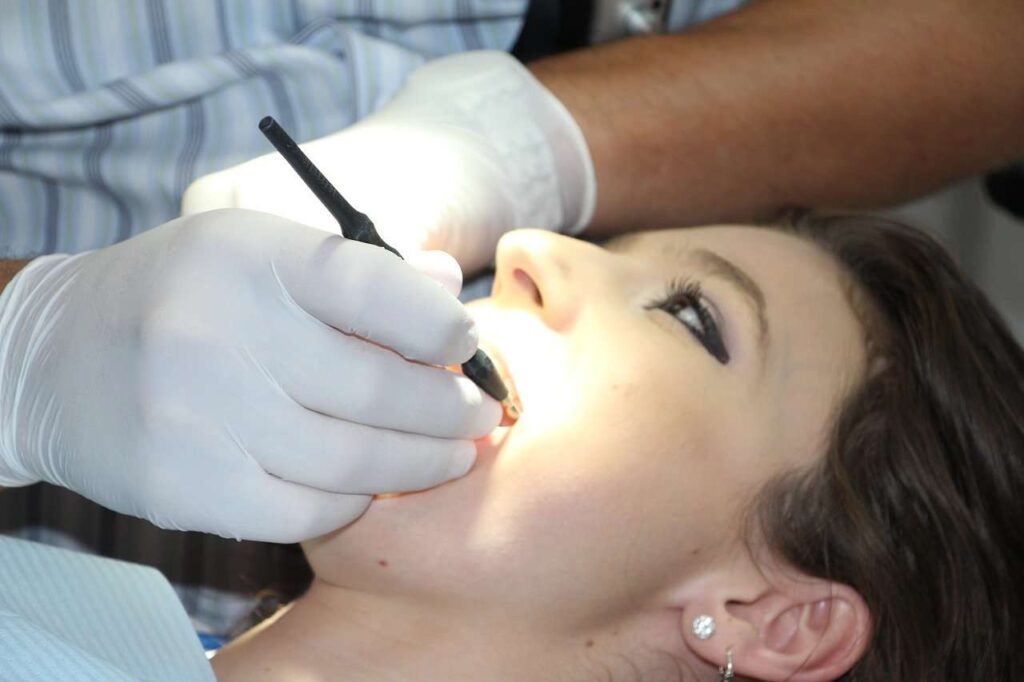Beating Gum Disease Is a Breeze

Eight out of 10 American adults suffer from gum disease, also known as periodontal disease, including right here in Lafayette, LA. Could you be one of them and not even know it here in Acadiana? Look for these warning signs, which could signal a problem and that you should see a dentist in Lafayette, Louisiana today:
- gums that bleed easily;
- red, swollen, tender gums;
- gums that are pulling away from your teeth;
- persistent bad breath;
- pus between the teeth and gums;
- loose or separating teeth;
- a change in the way your teeth fit together when you bite; or
- a change in the fit of partial dentures.
Any of this sound familiar? If so, you’ll know it’s nothing to smile about. Left untreated, gum disease can have some serious consequences, primarily tooth loss. In fact, it is the leading cause of tooth loss in adults. And that’s just the tip of the iceberg. Studies suggest a link between gum disease and a host of other health concerns, including diabetes, cardiovascular disease, stroke, bacterial pneumonia and increased risk during pregnancy.
The good news about gum disease is that detection and treatment are easy. The first step is to get to the dentist’s office. When it comes to gum disease, the earlier you catch it, the better. So, schedule a dental exam as soon as possible. During this visit, the dentist and staff will assess whether you suffer from gum disease and how far it’s progressed. The results of this exam will determine the next step.
In its earliest stage — commonly known as gingivitis — gum disease can be treated through a thorough professional cleaning followed by a stringent home-care maintenance program. Typically, the teeth will be scraped and polished, gums will be flossed and a certified dental hygienist will instruct the patient on proper self care to be performed on a daily basis.
In its later stages, gum disease requires more aggressive professional intervention, and your general dentist may refer you to a periodontist — a doctor specially trained in the prevention, diagnosis and treatment of periodontal disease. Scaling of the teeth and planing of the roots are standard procedures, and often medication is prescribed to combat infection. One of the newest and most effective ways of treating gum disease is through laser therapy, so ask your dentist or periodontist whether this option is available and appropriate for you.
Remember this: An ounce of prevention is worth a pound of cure. If you are among the fortunate 20 percent of our population who don’t suffer from gum disease, keep up the good habits. Brush and floss daily, eat a healthy diet and stick with your dentist’s recommended regimen of office visits, where your teeth will be inspected and cleaned.
In addition, avoid tobacco products. Those who smoke or chew tobacco are more likely than nonusers to develop plaque and tartar on their teeth. They also are more likely to have deeper pockets between their teeth and gums and greater loss of supportive bone and tissue. Also, you’ll want to keep oral appliances in check. Bridges that no longer fit properly and deteriorated fillings may retain plaque, increasing your risk of developing gum disease.
Curtis H. Roy, D.D.S., has served Acadiana residents with a general dentistry and specialty practice since 1970. He also is a leader among his peers, offering hundreds of seminars and workshops to dental professionals across the U.S. and Canada each year. Find him on the Web at www.drcurtisroyandassociates.com, visit his office at 3703 Johnston St., Lafayette, or call 337-981-9811.
Image by Reto Gerber from Pixabay
NOTE: The content on this blog is not intended to be a substitute for professional medical advice, diagnosis, or treatment. Always seek the advice of qualified health providers with questions you may have regarding medical conditions.


